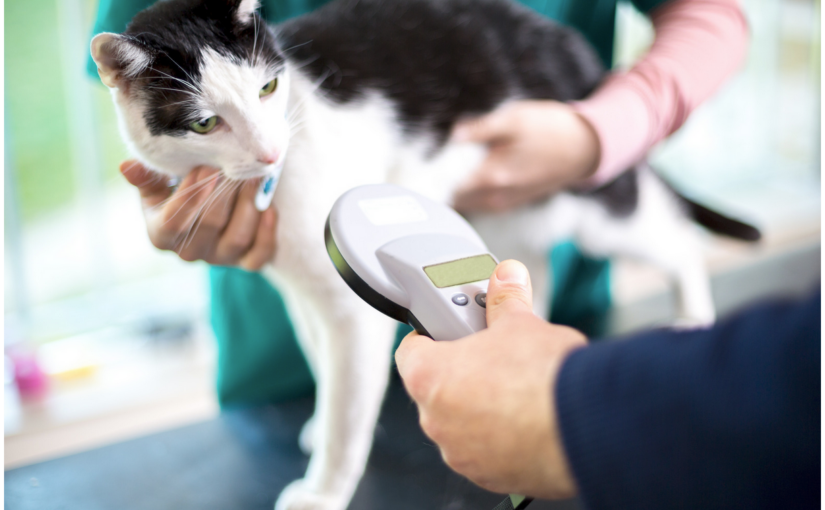As a responsible cat owner, you want to do everything you can to keep your feline friend safe. One of the most common ways to ensure your cat’s safety is through microchipping. But is it the right choice for your cat? In this post, we’ll dive deep into the pros and cons of microchipping your cat so you can make an informed decision that’s best for both you and your furry companion.
What is Microchipping?
Microchipping involves implanting a small electronic chip, about the size of a grain of rice, just under your cat’s skin, usually between the shoulder blades. This chip contains a unique identification number that can be read by a scanner. If your cat ever gets lost, a veterinarian or animal shelter can scan the chip, retrieve the identification number, and use it to access your contact information through a pet recovery database.
The Pros of Microchipping Your Cat
1. Permanent Identification
Microchipping provides a permanent form of identification that can’t be lost, removed, or damaged like collars or ID tags. Even if your cat loses its collar, the microchip will always be there.
2. Increased Chances of Being Reunited
According to studies, microchipped cats are more than 20 times more likely to be reunited with their owners than those without a microchip. This is especially important if your cat is an indoor cat that accidentally gets outside, as it may not be able to navigate back home on its own.
3. Quick and Relatively Painless Procedure
The process of implanting a microchip is quick, similar to getting a vaccination, and generally causes minimal discomfort for your cat. Most cats barely notice the chip once it’s implanted.
4. No Maintenance Required
Once implanted, a microchip requires no maintenance. There’s no need to worry about replacing batteries or updating the chip itself. As long as your contact information is current in the microchip registry, it will always work.
5. Supports Travel and Relocation
Many countries and regions require pets to be microchipped for identification, particularly for international travel. If you plan to move or travel with your cat, having them microchipped can simplify the process.
The Cons of Microchipping Your Cat
1. Potential for Health Risks
While microchipping is generally considered safe, there are rare cases where complications can arise. These might include infection at the implantation site, migration of the chip to another part of the body, or, in extremely rare cases, tumor development near the chip.
2. Not a GPS Device
A common misconception is that a microchip can track your cat’s location. Unfortunately, this isn’t true. Microchips are not GPS devices, so if your cat goes missing, the microchip alone won’t help you find them. It only works if your cat is found and scanned by someone with access to a microchip reader.
3. Requires Registration and Updates
For a microchip to be effective, your contact information must be registered with a pet recovery service and kept up to date. If you move or change phone numbers and forget to update the database, the microchip becomes virtually useless.
4. Scanning Limitations
Not all scanners can read all microchips, especially if the microchip was implanted in another country or uses a different frequency. While most shelters and veterinary clinics have universal scanners, there is still a small chance that a microchip may not be read correctly.
5. Initial Cost
While microchipping is relatively inexpensive, especially considering its benefits, it still represents an initial cost that some pet owners may find prohibitive. Prices can vary, and there may be additional fees for registering the chip and updating your contact information over time.
Making the Decision: Is Microchipping Right for Your Cat?
Deciding whether to microchip your cat is a personal choice that depends on your lifestyle, your cat’s habits, and your comfort with the procedure. Here are some factors to consider:
- Indoor vs. Outdoor Cats: If your cat is strictly indoors, you might feel microchipping is unnecessary. However, accidents happen, and even indoor cats can slip out unnoticed. Microchipping can be an essential safety net in such cases.
- Travel Plans: If you plan to travel or move internationally with your cat, microchipping is often a requirement. It also simplifies the process of relocating with your pet within the same country.
- Personal Comfort and Budget: Weigh the pros of permanent identification and increased chances of reunion against the cons, such as potential health risks and the need to maintain updated contact information. Your budget might also influence your decision, though many consider the peace of mind worth the cost.
Final Thoughts
Microchipping is a popular and effective way to protect your cat in case they get lost. The benefits often outweigh the risks, especially when you consider how much more likely it is that you’ll be reunited with your pet. However, it’s essential to be aware of the limitations and responsibilities that come with microchipping, such as the need to keep your contact information updated.
Ultimately, the decision to microchip your cat is a personal one. By considering the pros and cons outlined above, you can make an informed choice that aligns with your priorities and ensures the best care for your feline friend.
Additional Resources
American Veterinary Medical Association, Microchipping FAQ






